
But the reality is that there’s no definitive time frame. It depends.
SEO isn’t advertising. You can’t pay your way into Google’s organic results.
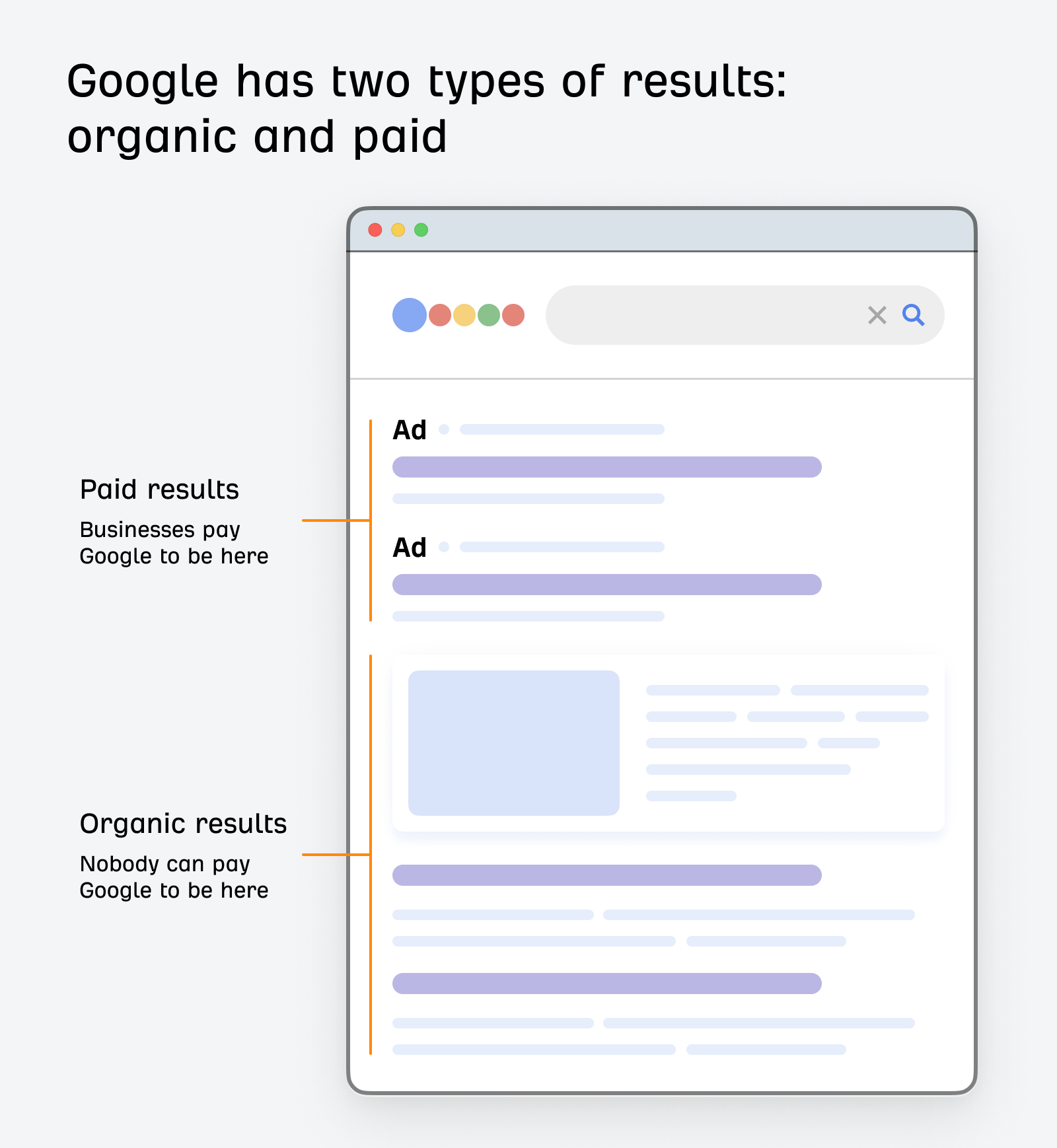
To rank #1 for a keyword, you need to demonstrate to Google that you’re the best, most relevant, and most helpful result. This means surpassing the other pages on multiple fronts:
- Relevance: Is your page aligned with what searchers are looking for?
- User experience: Is your page user-friendly and readable?
- Quality: Is your content helpful, interesting, insightful, or entertaining?
- Originality: Is your content unique and provides original information, reporting, research, or analysis?
- Expertise: Is your content created by someone who is knowledgeable or at least have experience in the thing they’re writing about?
Doing all of this well takes a lot of time and resources.
How long SEO takes depends on multiple factors. Here are some to consider:
1. Your website’s history
By virtue of their age, older websites tend to have more pages, content, backlinks, and website authority. As a result, they rank for more keywords.
On the other hand, newer websites need more effort and resources to get off the ground. Google’s John Mueller has even said that it could take up to a year for Google to figure out where to rank new sites. (This is likely what SEOs believe to be the “Google sandbox”.)
2. Your resources
It’s true for anything in life, and it’s true for SEO too. The more resources (time, effort, money) you can invest in SEO, the faster your results will be.
For example, you could hire more content writers to create high-quality content for you. Or you could invest in SEO tools and make your work easier, faster, and more efficient. You could also create a link building team to actively build links for you. The possibilities are endless.
3. Your competition
SEO doesn’t exist in a bubble. Your competitors are probably doing SEO too. If the keywords you’re targeting are highly competitive, then it’s going to take you a longer time to rank.
For example, we would love to rank for the keyword “seo.” But the top-ranking pages have tens of thousands of links (which are a ranking factor):
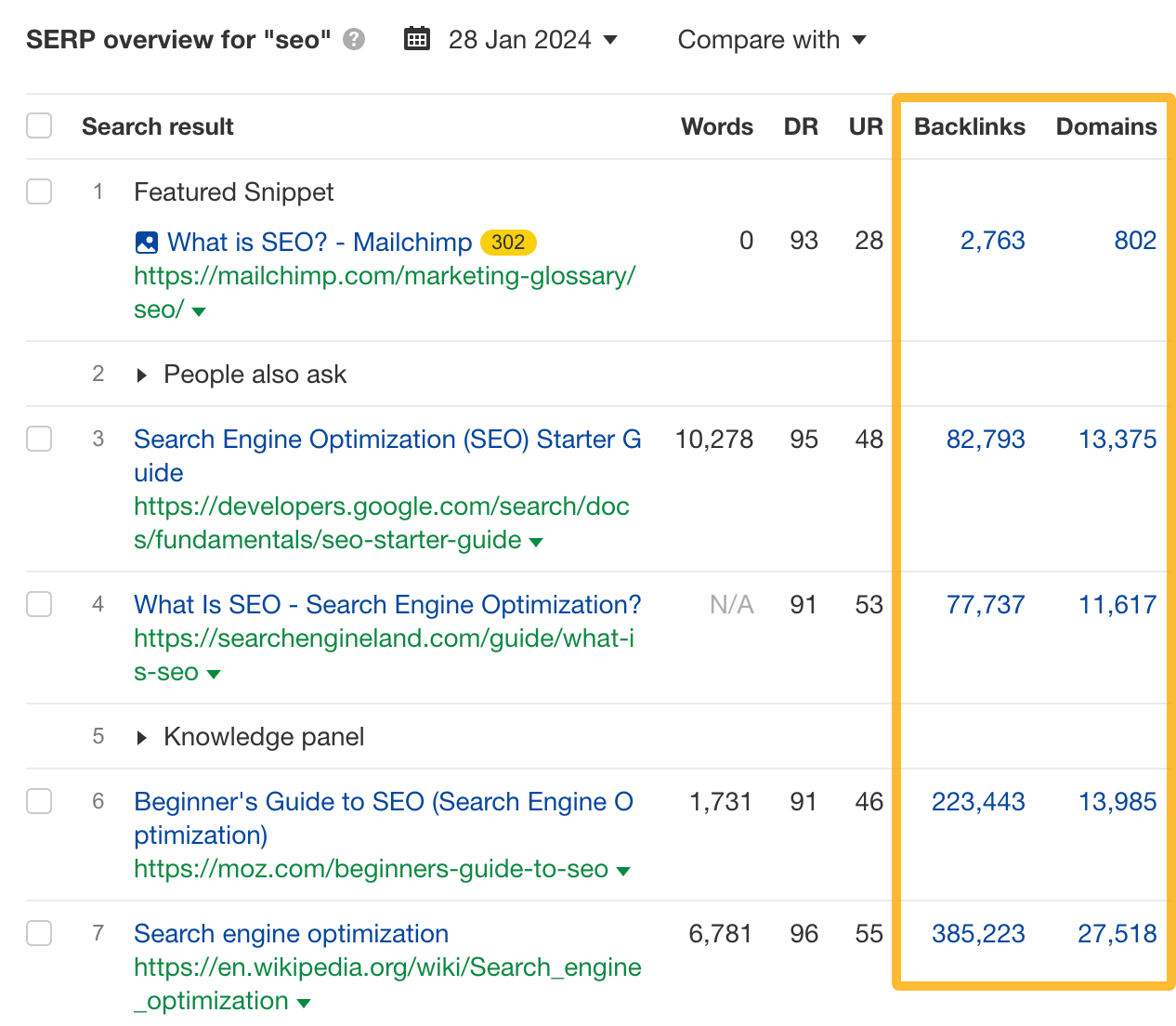
In fact, the Keyword Difficulty (KD) score for this keyword is a whopping 97:
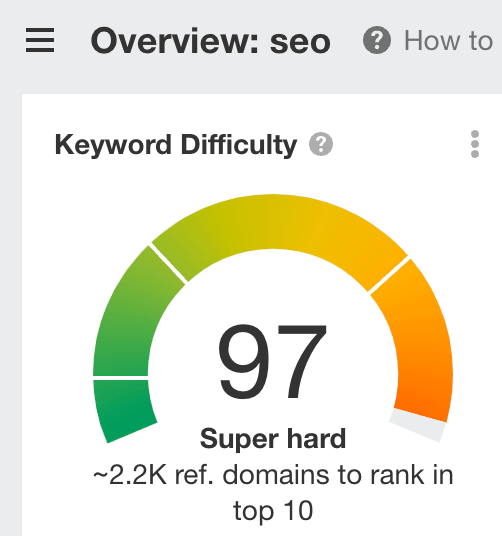
If we want to compete, it’ll take us lots of time. On the other hand, it’s much easier to rank for “seo vs sem.” It has a lower KD of 37:
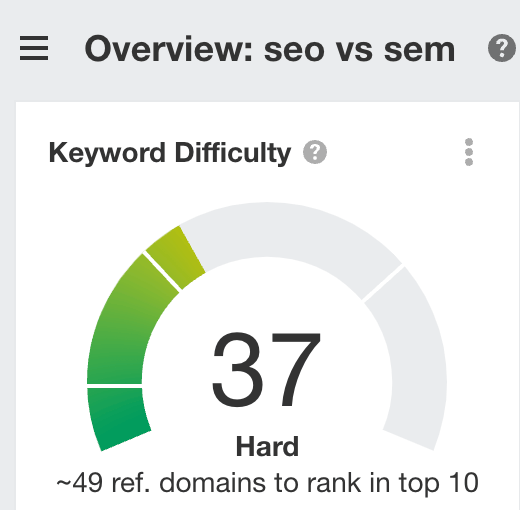
So, we targeted the keyword and now rank #1:
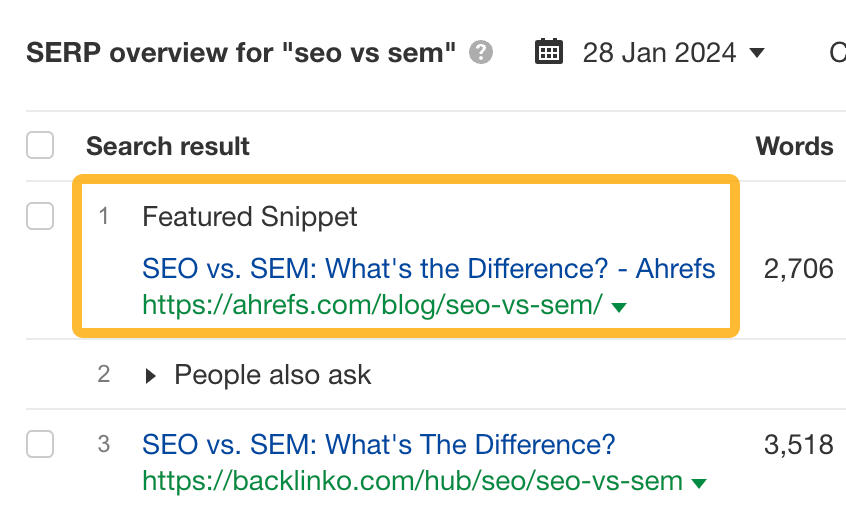
4. Your goals
If your goal is to rank #1 for a KD0 keyword, it could be achieved fast. However, if your goal is to compete with big brands and rank for a hyper-competitive keyword, then it may take months or even years.
5. Your strategy
A good strategy is half the battle won.
If you have a goal, and you have a concrete plan on how to achieve it, you’ll have a higher chance of achieving faster results.
For example, if your goal is to rank for important (but ultra-competitive) keywords, there are other ways to get there besides tackling those keywords head-on. You could build up slowly to your crucial keywords by first targeting low-competition topics that have business value. That way, you can still generate organic traffic to your site while accumulating links and more for the future.
6. Your execution
There’s no point in dreaming up the greatest SEO strategy in the world if nothing gets done.
So, to win the other half of the battle, you have to execute. The more consistently you can do it, the faster you’ll likely see results.
Good news: there’s no need to resign yourself to the fate of “slow SEO results.” There are quick wins that can help you rank higher and get more organic traffic.
1. Target low-competition keywords
Not all keywords are equally competitive. So, you can likely get results faster if you focus on the ones that are low competition.
Here’s how to find low-competition keywords:
- Enter your target keyword in Keywords Explorer
- Go to the Matching terms report
- Set the Keyword Difficulty (KD) filter to a maximum of 20
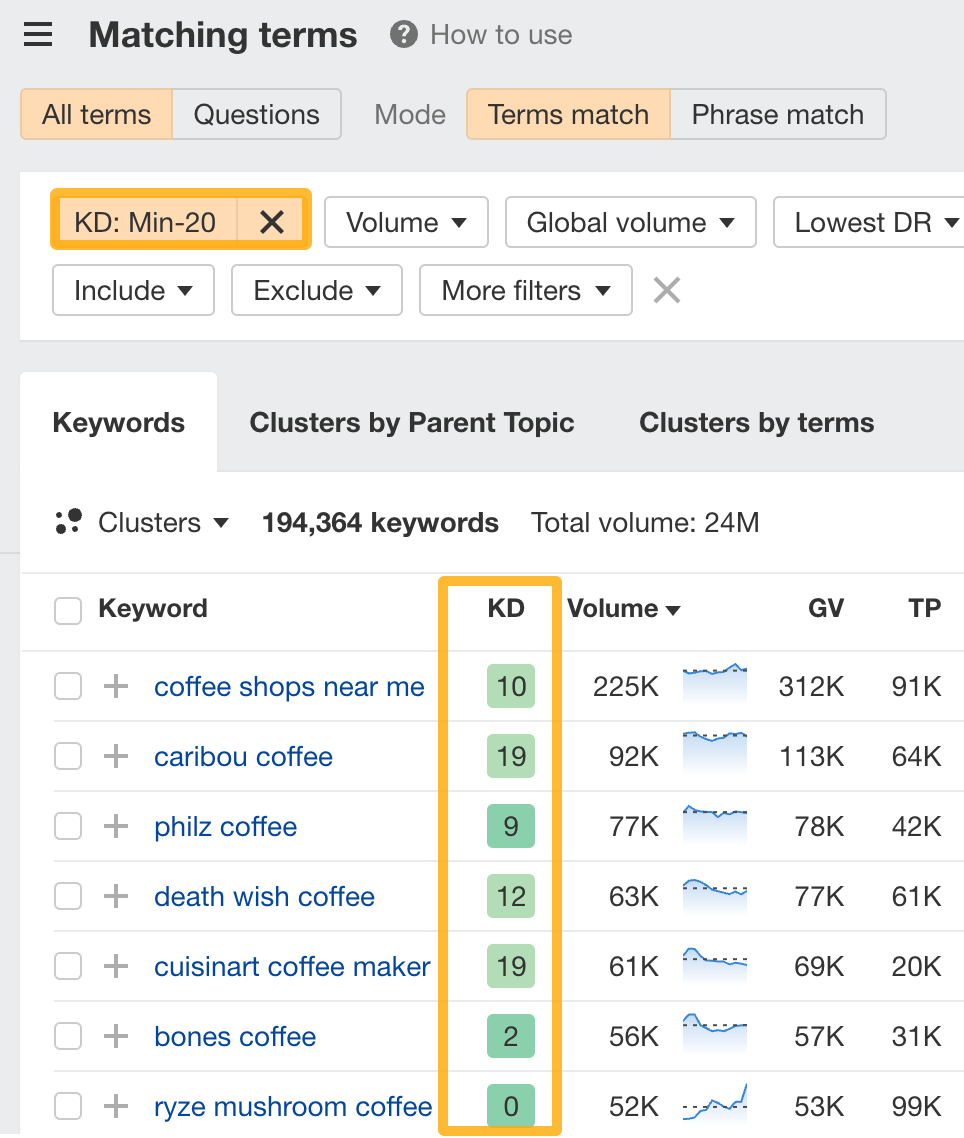
Eyeball the list and pick out those that are relevant for your site.
Alternatively, you can also look for keywords where a website with a low DR ranks in the top 10. Domain Rating (DR) is our website authority metric. So, even if a keyword is competitive, a website ranking with a low DR signals that it’s a potentially challengeable keyword.
To do this, set the Lowest DR filter to 20 (or a number you’re comfortable with) and choose in top 5 (to make it even more fail-safe).

This will show you all the keywords that have a website ranking in the top 5 with a maximum DR of 20. For example, even though this keyword has a KD of 85, a website with DR12 still managed to rank in position #3:
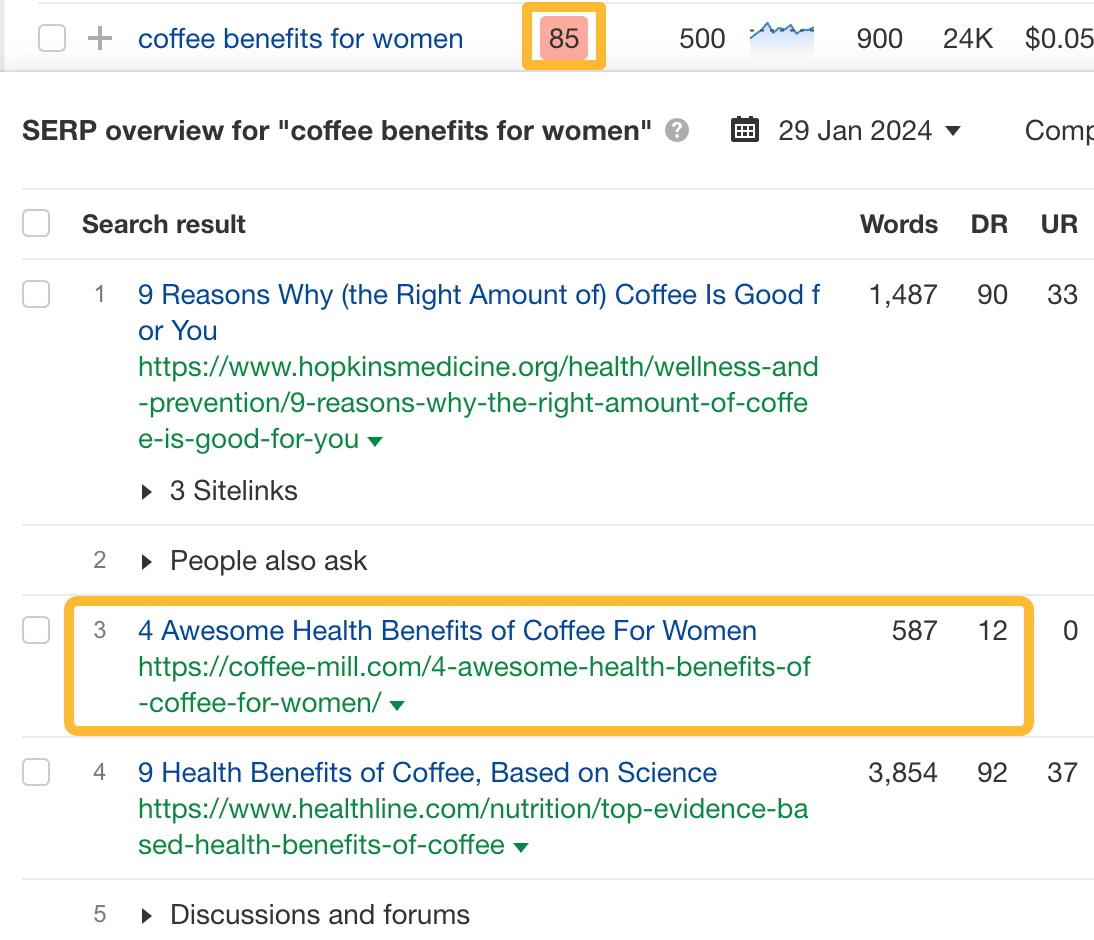
It’s impressive, but also means you could potentially rank for this keyword, too.
2. Optimize for featured snippets
Featured snippets are quick answers in Google search results pulled from a page ranking in the top 10. If you ‘win’ them, you can jump right to the top of Google search results.
Here’s how to find featured snippet opportunities:
- Enter your domain into Site Explorer
- Go to the Organic keywords report
- Set the Position filter to 2-10
- Use the SERP features filter to find keywords that trigger featured snippets “where target doesn’t rank”
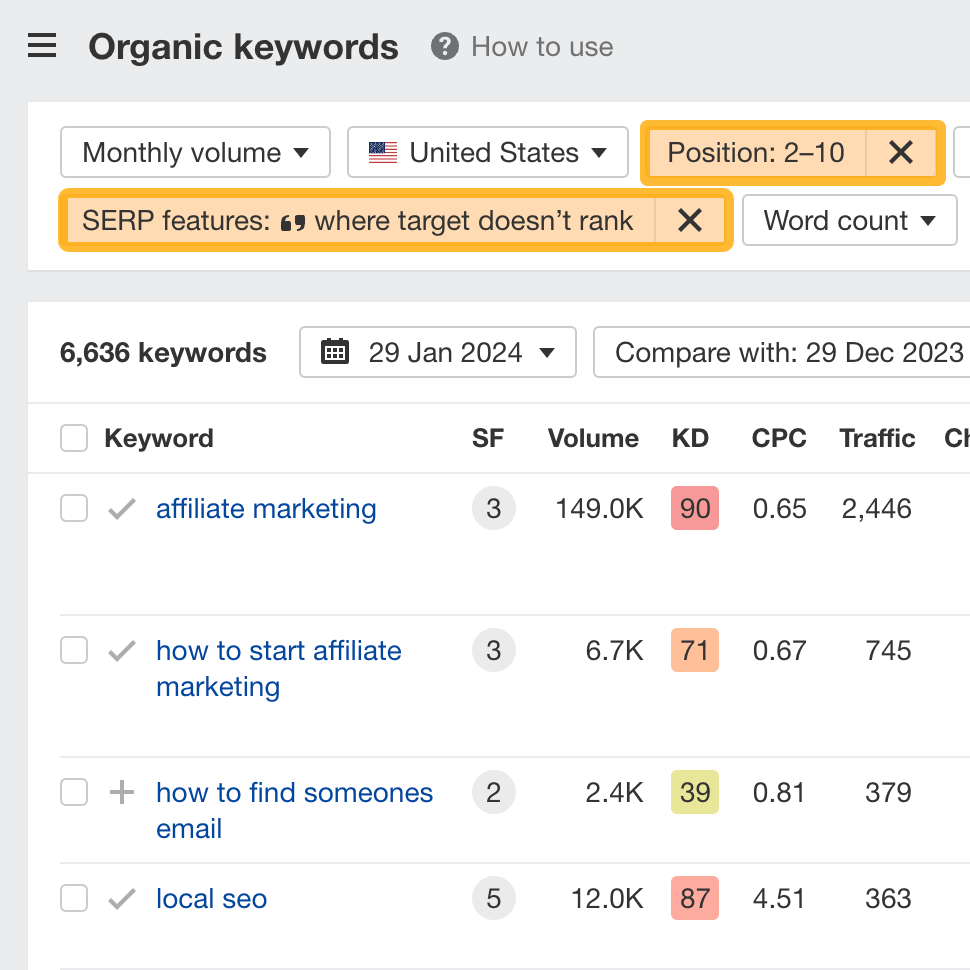
Look through the list to see if there are opportunities where you can grab the snippet.
For example, the featured snippet for the keyword “relevant content” is a definition:
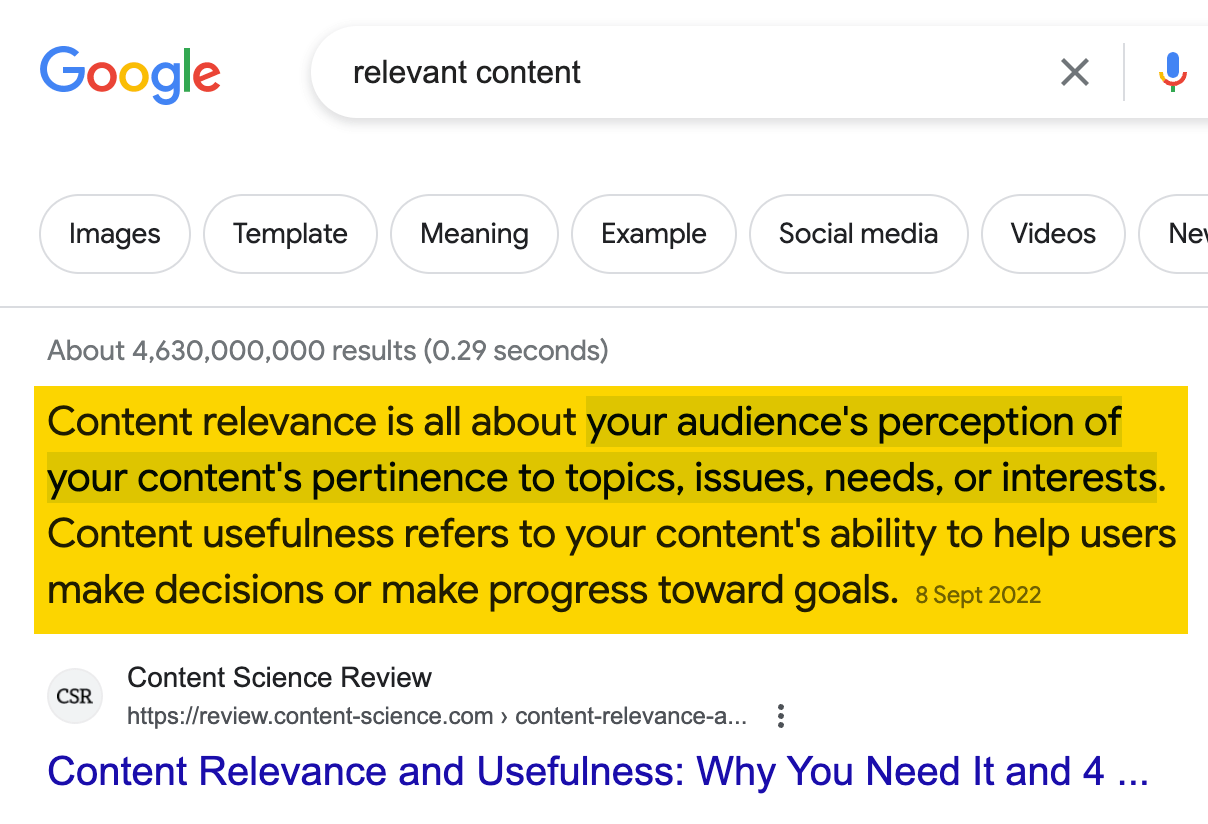
Our blog post targeting this keyword doesn’t have a definition, so we could include it and hopefully win the snippet for ourselves.
3. Boost pages with internal links
Internal links are links from one page on the same domain to another. Since they pass PageRank, they can help boost a page’s rankings.
To find internal link opportunities, sign up for a free Ahrefs Webmaster Tools (AWT) account and run a crawl of your site using Site Audit. Then, go to the Internal link opportunities report.

This report shows you relevant internal link opportunities on your own site. If there are specific pages you’d like to boost, like important product pages, then set the filter to Target page and enter a relevant URL:

Look through the recommended suggestions. Where relevant, add your internal links.
4. Make sure your pages are indexable
If Google can’t index your page, the page can’t appear in the SERPs. So, you want to make sure you did not accidentally add a noindex tag to any of your important pages.
Run a crawl of your site using Site Audit (free with AWT). If there are any pages with noindex tags, they’ll appear as issues:

Unless they’re inserted deliberately, you’ll want to remove those tags.
5. Refresh outdated content
If your page doesn’t rank, is diminishing in search traffic, or is outdated, give it a refresh. Many times, this will give you a boost in search traffic, like what happened every time I updated my post on free SEO tools:
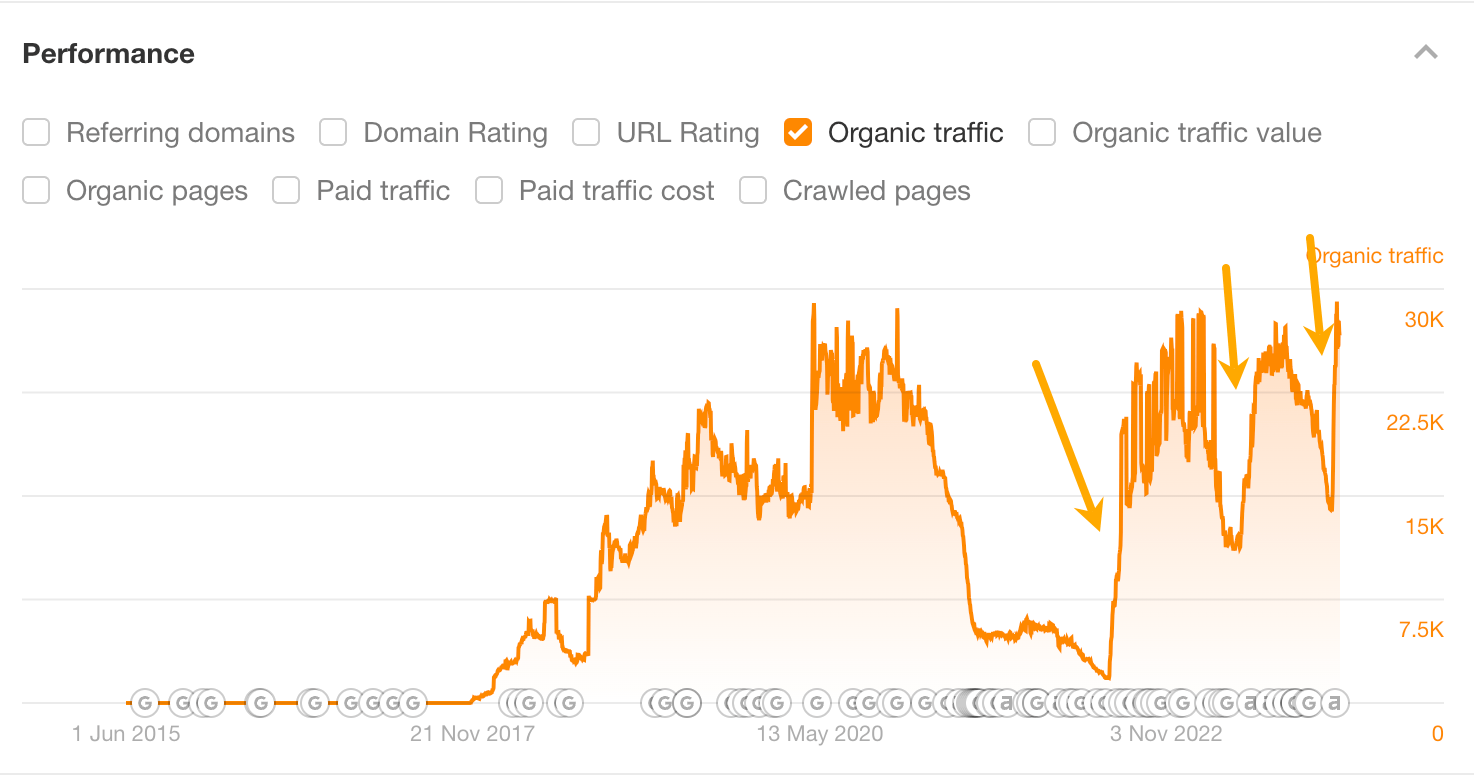
To find outdated content, go to the Opportunities report and click on Content with declining traffic.
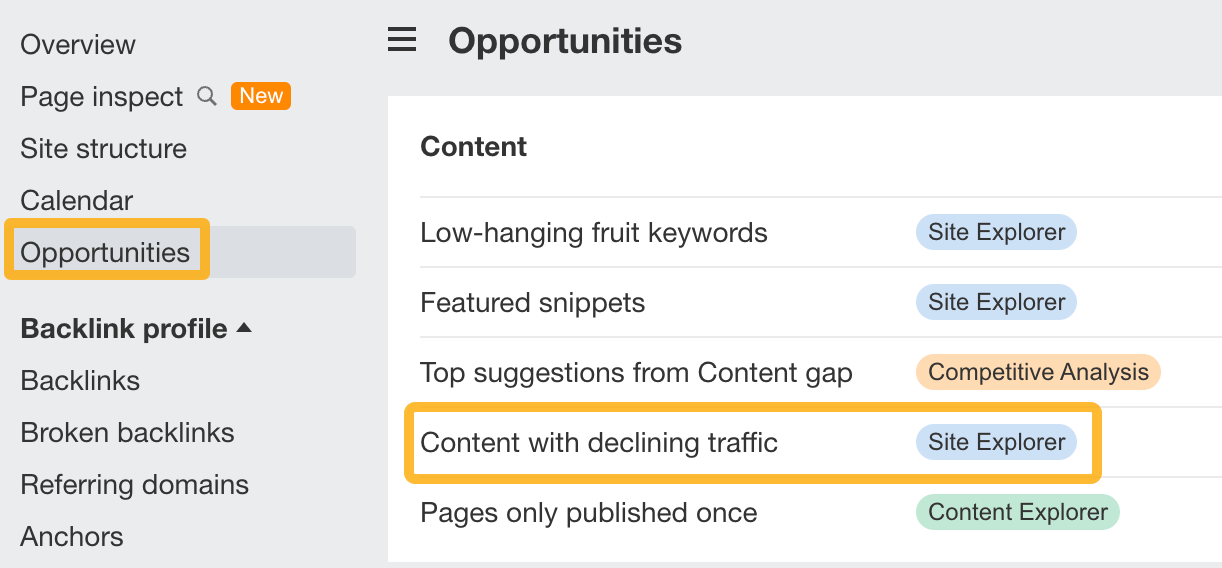
This will show you pages that have declining traffic in the past six months.

Eyeball the list and look for pages where searchers would likely want fresh information. For example, our post on the top YouTube searches has been declining in search traffic:

It has also not been updated for three years:

So, we probably need to freshen up the post with new data.
Learn more
Want to find out more about SEO? Check out these resources:




